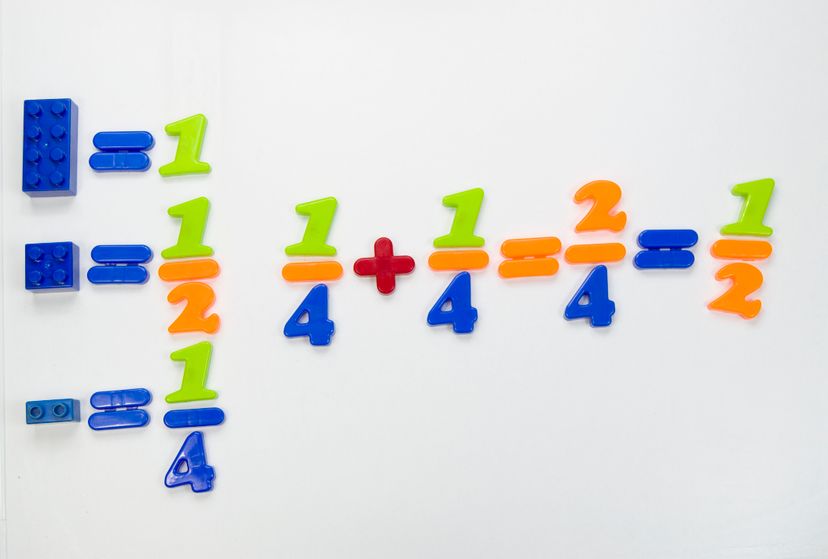Step 1: Find the Least Common Denominator
When the denominators of the two fractions you're adding together are different (meaning they're unlike fractions), your first job is to make all the denominators the same. You'll do this by finding a common multiple of the two denominators — by convention, you find the smallest multiple. That number is called the least common denominator (LCD).
Let's find out how to find the LCD when we add these two fractions:
2/3 + 1/4
The denominator of the first fraction is 3 and that of the second fraction is 4, and both fractions are in their simplest forms. If you can't divide 3 into 4 or vice versa, you'll find the LCD by multiplying the two denominators together. In the case of the denominators 3 and 4, the LCD is the product of those two numbers: 3 x 4 = 12
Step 2: Multiply Each Fraction By 1 to Find Equivalent Fractions
Fun fact: It's okay to multiply each term in an addition problem by 1, because anything multiplied by 1 is just itself. So, 2/2 = 1, just like 47/47 = 1.
The way to even out the denominators in an addition problem is to replace 1 with the number it will take to get the denominator of that fraction to the LCD, divided by itself.
2/3 + 1/4
(1 x 2/3) + (1 x 1/4)
For each fraction in the addition problem, you want to find out what you could multiply the denominator by in order to get the LCD. For the first fraction, that number will be 4. We then replace the 1 that we will multiply by fraction A with 4/4. The number we'd multiply the denominator by in the second fraction is 3, so we replace 1 with 3/3.
Now our expression looks like this:
(4/4 x 2/3) + (3/3 x 1/4)
Now we multiply the top and bottom numbers in both sets of fractions:
(4/4 x 2/3 = 8/12) + (3/3 x 1/4 =3/12)
From here, we add the two fractions together as normal, because each one has a new numerator and the same denominator.
8/12 + 3/12 = 11/12
Side Note
On the other hand, if you can divide one denominator evenly into the other, then you only need to convert one fraction, not both. For instance, if we were instead adding 1/3 + 5/6, the first fraction's denominator (3) divides evenly into the second one's denominator (6).
